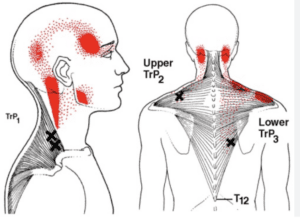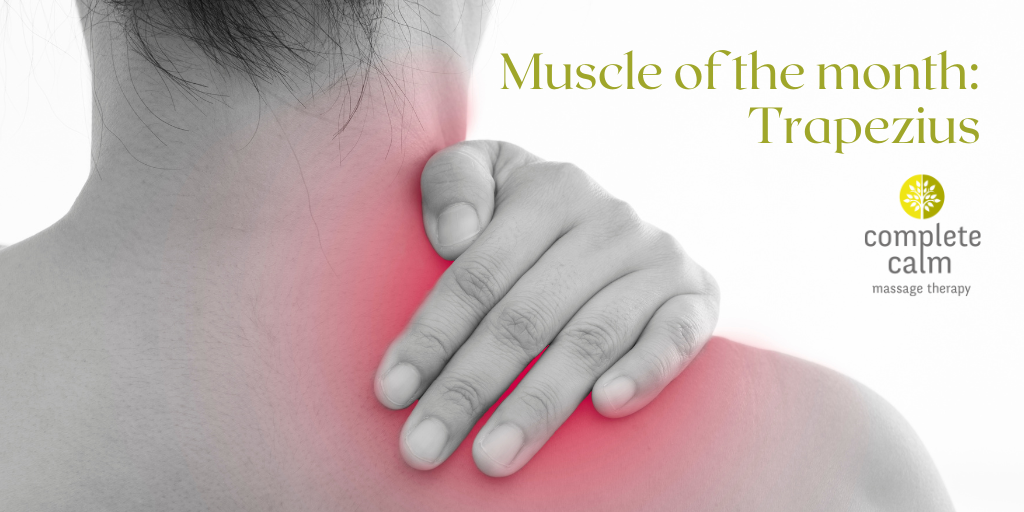Welcome to Muscle of the Month: a new series to explain some of those troublesome muscles of the body. I’m going to start with the Trapezius, which is the one we instinctively go for if someone asks us to rub their shoulders.
The trapezius is a large powerful muscle in your upper body. This diamond-shaped (that’s how it got its name) muscle stretches across the back of your neck, shoulders, and upper spine, quietly working to keep you moving and upright. But when it gets tight or overworked, it can cause nagging shoulder tension and headaches.
What does the trapezius do?
Your trapezius is made up of three parts: upper, middle, and lower, each with its own important role:
Upper fibres: These fibres help elevate the shoulders (think of shoulder shrugs) and extend the neck (think of looking up towards the ceiling)
Middle fibres: They pull the scapula (shoulder blades) back towards the spine, helping with posture and arm movements.
Lower fibres: These fibres help depress the shoulders and stabilise the scapula, supporting smooth shoulder movements.
Together, these fibres help you lift, pull, and turn, ensuring that your upper body functions smoothly in everyday activities – whether you’re carrying shopping, lifting a child, or even just sitting at your desk.
Origins and Insertions
The trapezius originates from several areas: the base of your skull, the nuchal ligament (a band of tissue along the back of your neck), and the spinous processes (bony projections along the vertebrae) of the spine down to T12. It then inserts into the lateral third of the clavicle (collarbone), the acromion (the bony tip of the shoulder), and the spine of the scapula.
Common Problems with the Trapezius
Like any muscle, the trapezius can run into a few problems:
- Tension and pain: The upper trapezius is a common spot for stress-induced tension, particularly if you spend long hours at a desk.
- Trigger Points: Did you know that trigger points in the upper trapezius can refer pain to the side of your head in a pattern that resembles a question mark? This is often confused with tension headaches and can even cause discomfort around the eyes. See the image on the right
- Postural imbalances: Things like rounded shoulders or forward head posture can overwork the upper trapezius while weakening the lower fibres, leading to discomfort and muscle imbalance.
How to help your trapezius
- Massage Therapy: Regular massage can work wonders for releasing tension and trigger points, improving local circulation, and helping the trapezius function better.
- Stretching: Incorporating neck stretches, like ear-to-shoulder or chin tucks, can help to gently release tension in the upper fibres. Yoga is great for this and I recommend Nerine at Mindful Movement with Nerine
- Strengthening exercises: Targeting the middle and lower trapezius fibres with exercises like rows and scapular retractions can balance the muscle and improve posture. The https://www.fitnessgarageharrogate.co.uk/ has excellent Personal Trainers who can help with this.
- Ergonomics: Adjusting your workstation to align your head over your shoulders can prevent strain and keep the trapezius from becoming overloaded.
Your trapezius works hard every day , so why not show it some love? A relaxing massage can help ease tension, reduce pain, and allow this hardworking muscle to relax and recover. Whether you’re dealing with shoulder tightness, headaches, or simply need to unwind after a long day, I’m here to help you feel better. Ready to release that tension? Contact me now to schedule your appointment!
Want to read more about the shoulder? Head here to read about the levator scapula


Recent Comments